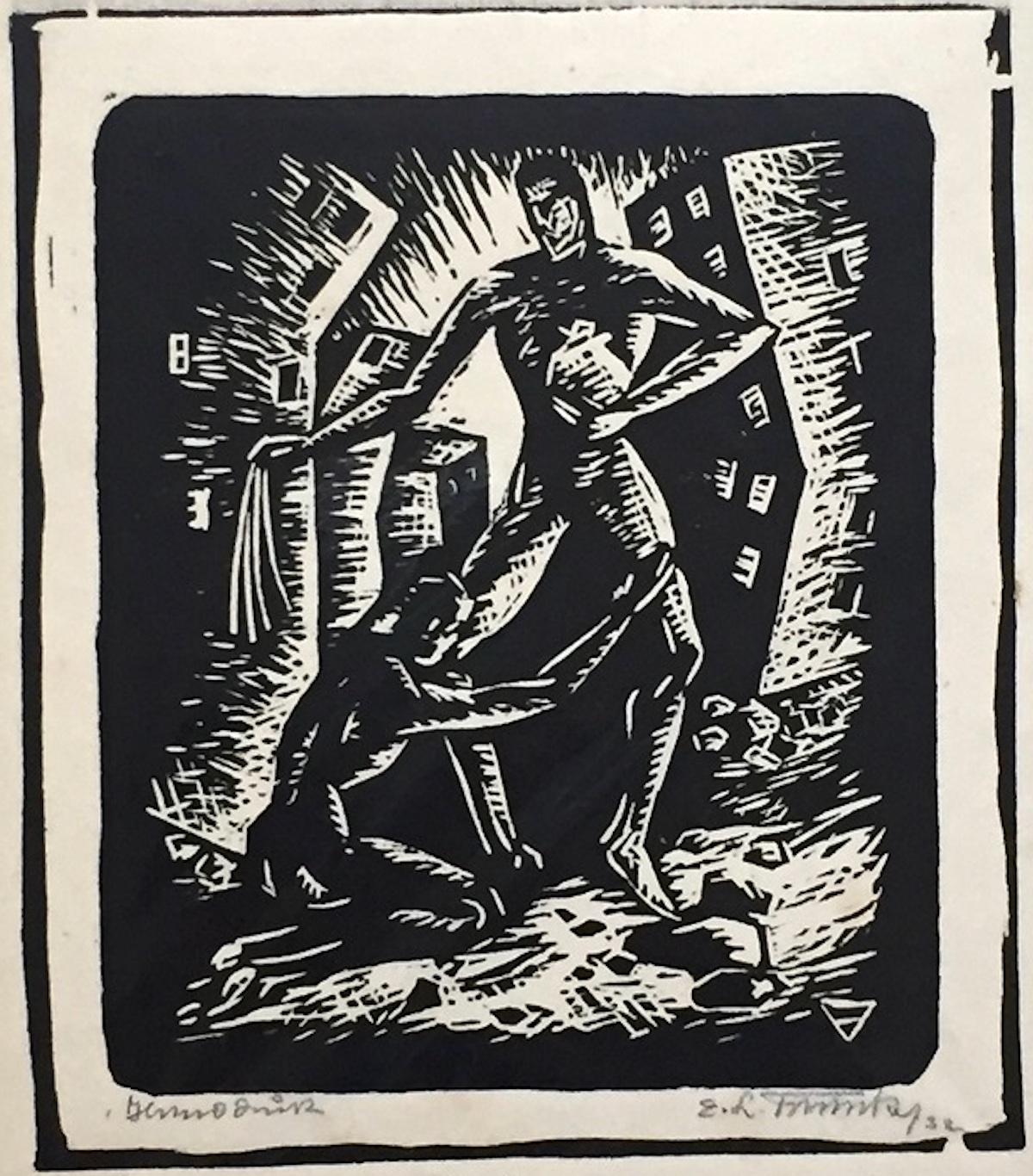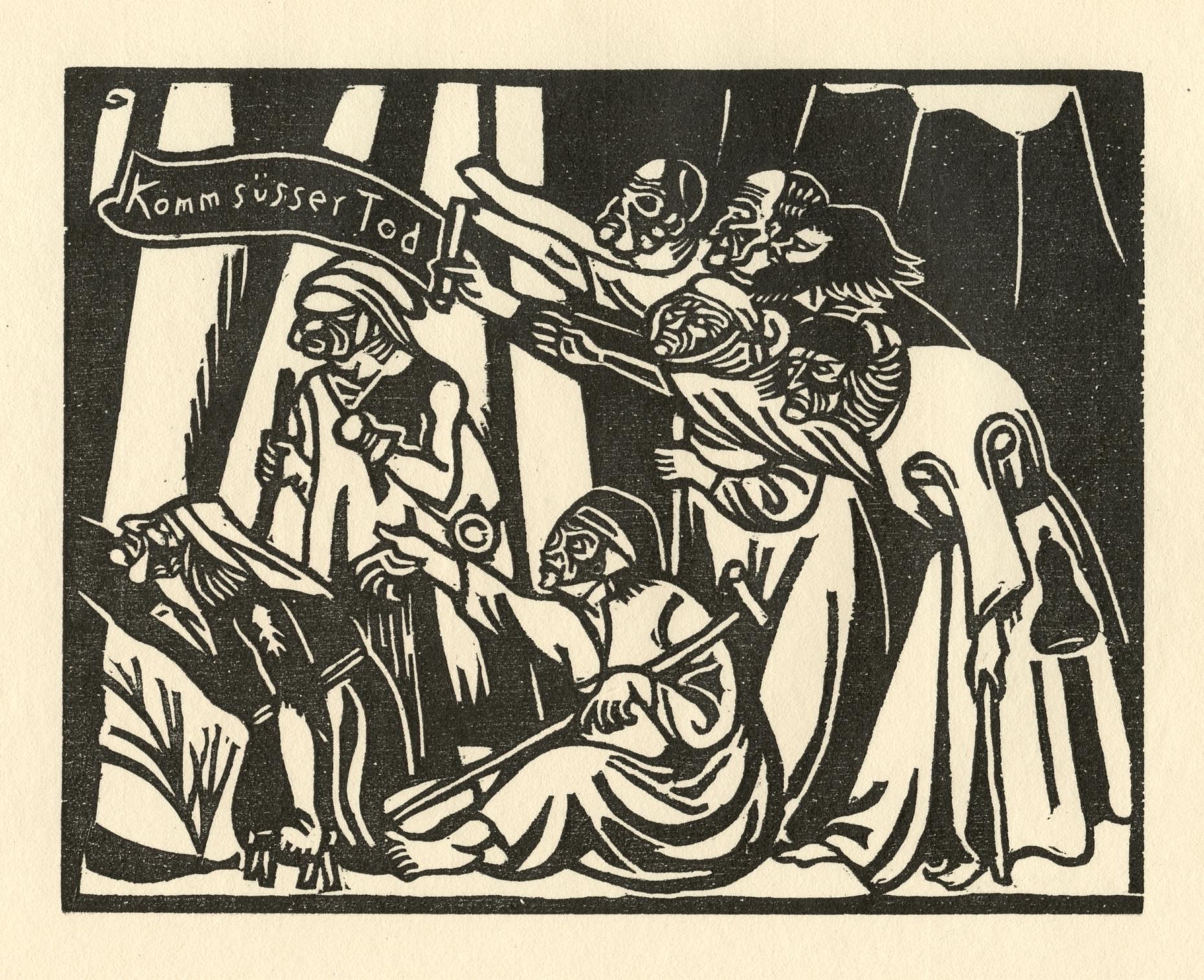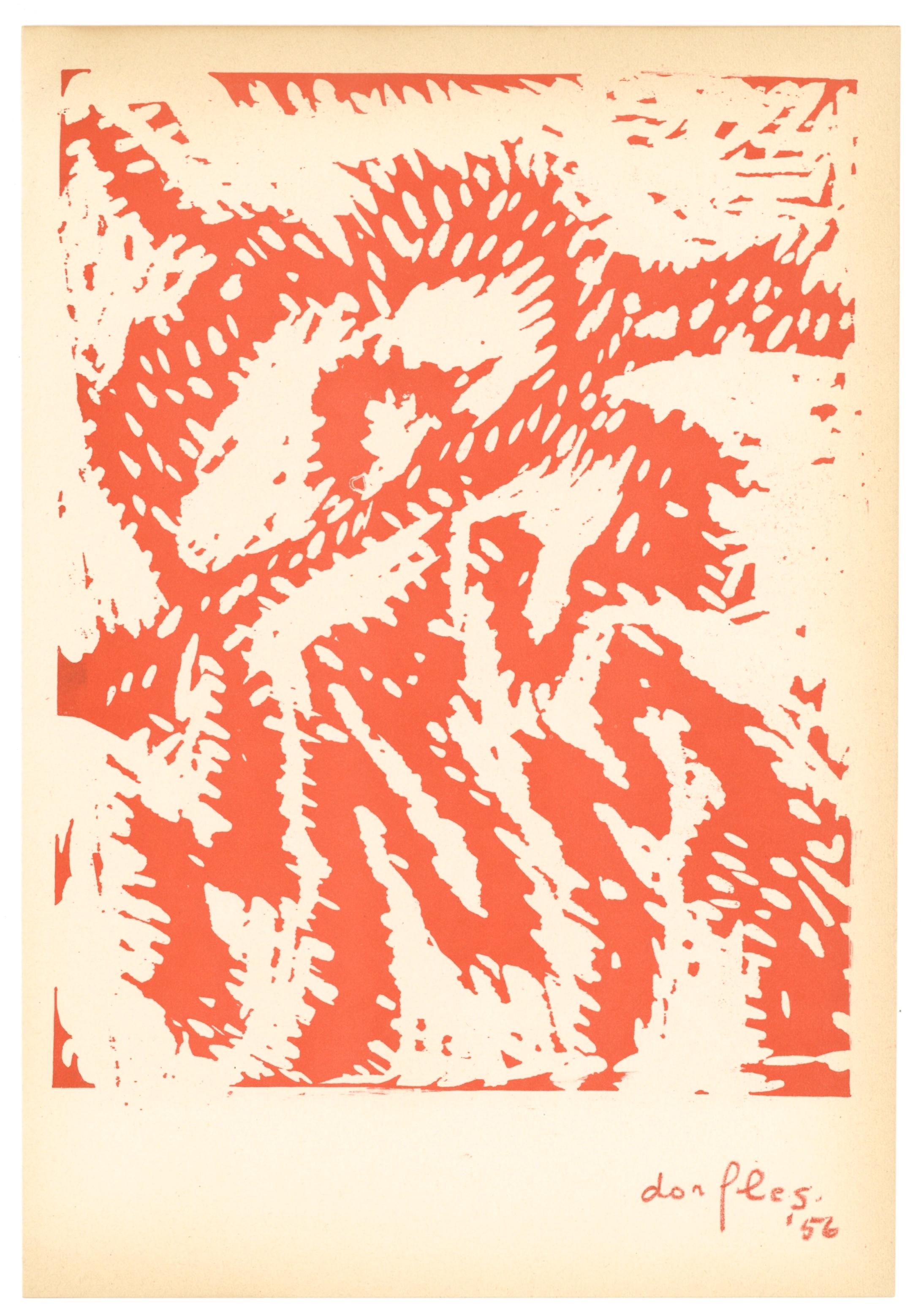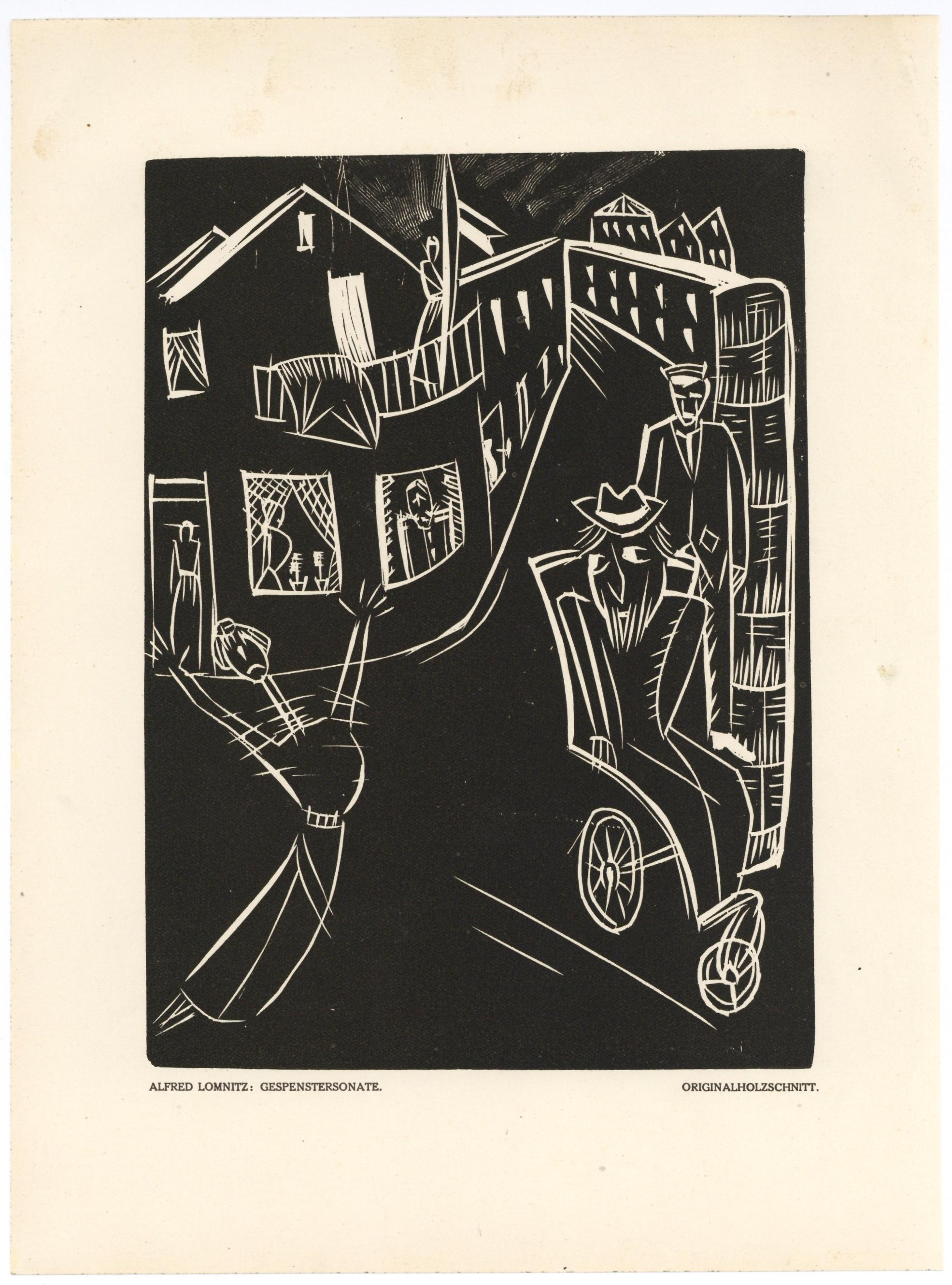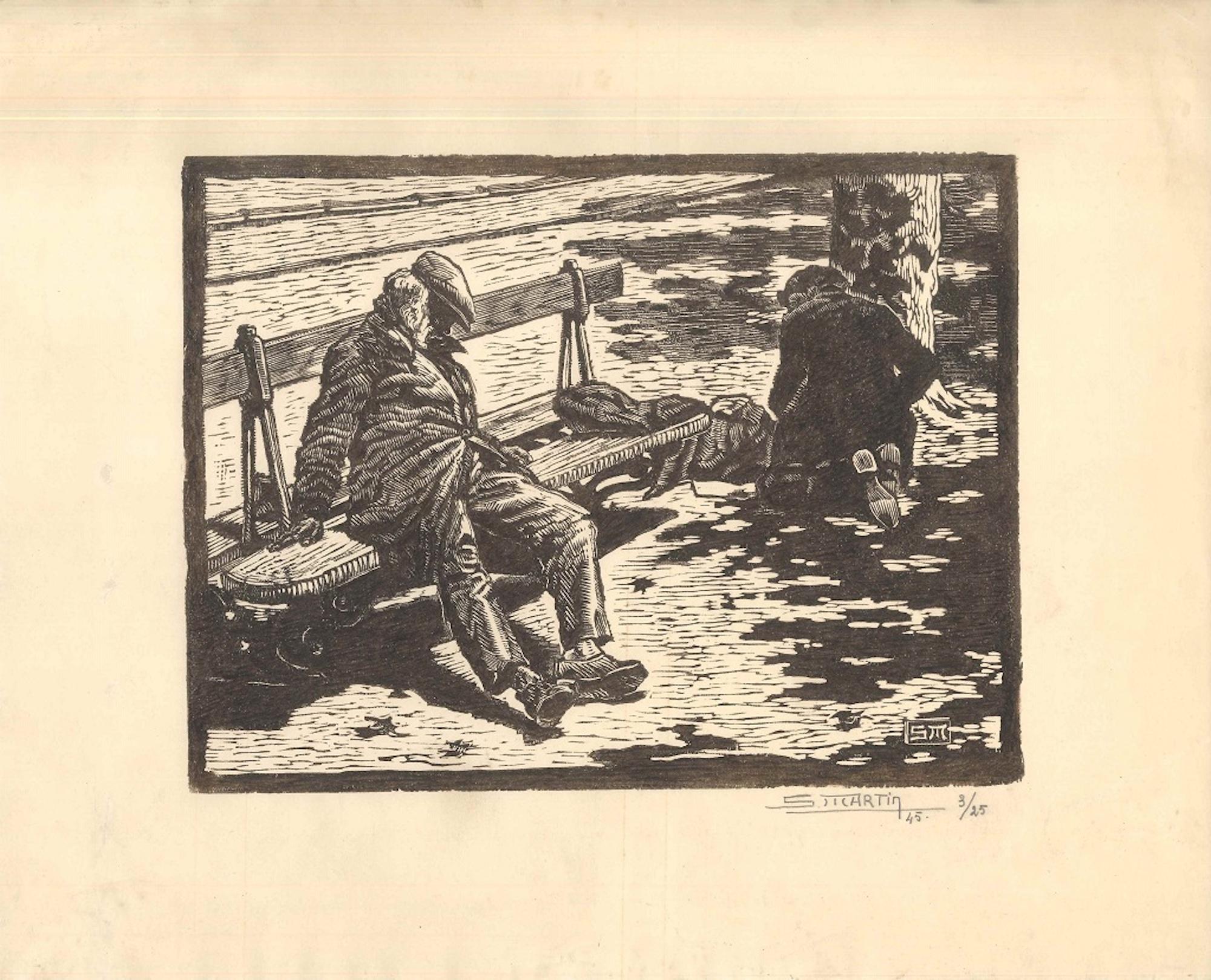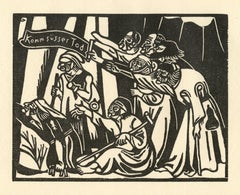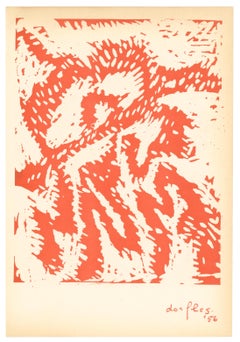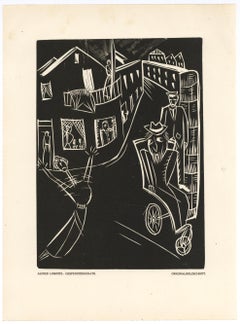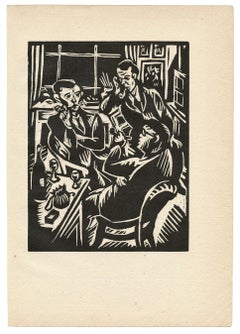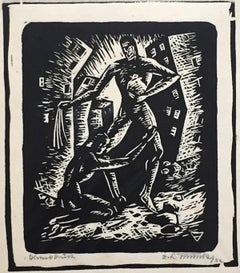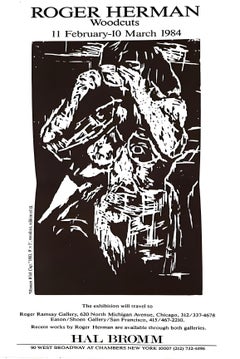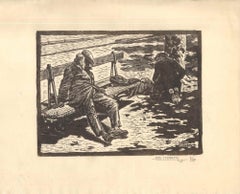Items Similar to original woodcut
Want more images or videos?
Request additional images or videos from the seller
1 of 2
Eberhard Viegeneroriginal woodcut1919
1919
$300
£228.69
€261.26
CA$422.14
A$462.38
CHF 243.44
MX$5,518.31
NOK 3,102.44
SEK 2,836.10
DKK 1,952.31
About the Item
Medium: original woodcut. This impression on wove paper was printed in 1919 for Das Kestnerbuch, an important collection of original prints published during the height of the German Expressionist movement. Image size: 6 3/8 x 5 inches (170 x 128mm). Sheet size: 11 x 8 1/2 inches (280 x 220mm). Signed in the plate (not by hand).
Condition: There is a repaired tear in the margin (well outside and not affecting the image). A rich, dark impression!
- Creator:Eberhard Viegener (1890 - 1967, German)
- Creation Year:1919
- Dimensions:Height: 6.7 in (17 cm)Width: 5.04 in (12.8 cm)
- Medium:
- Movement & Style:
- Period:
- Condition:Condition: There is a repaired tear in the margin (well outside and not affecting the image).
- Gallery Location:Henderson, NV
- Reference Number:1stDibs: LU2365214770912
About the Seller
5.0
Platinum Seller
Premium sellers with a 4.7+ rating and 24-hour response times
Established in 2006
1stDibs seller since 2023
591 sales on 1stDibs
Typical response time: 1 hour
- ShippingRetrieving quote...Shipping from: Henderson, NV
- Return Policy
More From This Seller
View All"Aus dem Composanto" original woodcut
Located in Henderson, NV
Medium: original woodcut. The inscription on the banner translates to "Come Sweet Death". Printed in Germany in 1922 for the rare Ganymed portfolio of "Das vierte Jahrbuch der Marees...
Category
1920s Expressionist Figurative Prints
Materials
Woodcut
original woodcut
Located in Henderson, NV
Medium: original woodcut. Executed for the second volume (1956-57) of the very rare Documenti d'Arte d'Oggi, published in Milan by Groupe Espace. Size: 12 1/2 x 8 1/2 inches (318 x 2...
Category
1950s Prints and Multiples
Materials
Woodcut
"Gespenstersonate" original woodcut
By Alfred Lomnitz
Located in Henderson, NV
Medium: original woodcut. Executed in 1920 for Das Kunstblatt, published in Berlin by Verlag Gustav Kiepenheuer. The total sheet measures 10 3/4 x 8 3/4 inches (275 x 210mm); the ima...
Category
1920s Expressionist Prints and Multiples
Materials
Woodcut
"In Memorium Rene Beeh" original woodcut
Located in Henderson, NV
Medium: original woodcut. This impression on laid paper was printed in Germany in 1922 for the rare Ganymed portfolio "Das vierte Jahrbuch der Marees Gesellschaft" and published in M...
Category
1920s Expressionist Prints and Multiples
Materials
Woodcut
original linocut
By Alberto Magnelli
Located in Henderson, NV
Medium: original linoleum cut. Printed in 1938 for the art revue XXe Siecle (issue number 4). Size: 12 1/2 x 9 3/4 inches (317 x 248 mm). Not signed.
Condition: there are pinholes i...
Category
1930s Prints and Multiples
Materials
Linocut
"Der Hirte" original woodcut
Located in Henderson, NV
Medium: original color woodcut. Catalogue reference JH 771. Published in 1919 for Genius. Image size: 9 1/2 x 7 inches (240 x 178mm), on wove paper with full margins. This print is f...
Category
1920s Expressionist Figurative Prints
Materials
Woodcut
You May Also Like
The Plea - Woodcut - Early 20th Century
Located in Roma, IT
Image dimensions: 15.3x13 cm.
The Plea is an original woodcut realized by an artist of the 20th century.
Good conditions. Hand-signed on the lower margin (unreadable).
The origina...
Category
Early 20th Century Figurative Prints
Materials
Woodcut
Roger Herman Woodcuts, Hal Bromm Gallery Poster
By Roger Herman
Located in New York, NY
This item is a part of Hal Bromm Gallery's SUMMER SALE, taking place September 5th-9th, 2023.
Category
20th Century Prints and Multiples
Materials
Woodcut
Untitled - Woodcut Print by Simon Martin - 1945
Located in Roma, IT
Untitled is a beautiful black and white xylograph on ivory-colored paper, realized in 1945 by the French artist Simon Martin.
Signed, dated and numbered in pencil on the lower margi...
Category
1940s Modern Figurative Prints
Materials
Woodcut
Victor Rebuffo (1903-1983) - Mid 20th Century Woodcut, Portuario
Located in Corsham, GB
An original woodcut print by the listed Italian-Argentinian artist Victor Luciano Rebuffo (1903-1983). Entitled 'Portuario'. The print depicts a figure, likely a dockworker. Monogram...
Category
20th Century Portrait Prints
Materials
Woodcut
The Evocation - Woodcut - Early 20th Century
Located in Roma, IT
Image dimensions: 13x9.6 cm.
Man with landscape is an original woodcut realized by an artist of the 20th century, around 1920. Unreadable signature.
Good conditions except for some...
Category
Early 20th Century Figurative Prints
Materials
Woodcut
Ex Libris - Woodcut - Mid 20th Century
Located in Roma, IT
Ex Libris is a Modern Artwork realized in Mid 20th Century.
Woodcut on paper.
The work is glued on ivory cardboard
Total dimensions: 20x 15 cm.
Good conditions.
The artist wan...
Category
Mid-20th Century Modern More Art
Materials
Paper, Woodcut
More Ways To Browse
Disney Lobby Card
F1 Art
Felix The Cat
Francisco Zuniga Lithograph
George Dyer
Greece Poster
Guidi Virgilio
Gustav Klimt Original
Harold Altman Lithographs
Hebrew Lithograph
Henri Matisse Original Lithographs
Henry Moore Etching
Imaginations And Objects Of The Future Portfolio
Japanese Print Gold
Jazz Festival Poster
Katz Morris
Keith Haring 1984
Leroy Neiman Signed
